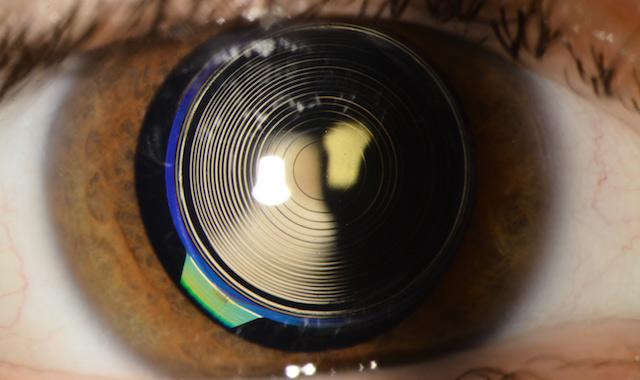The Multifocal IOL
The Multifocal IOL is designed to provide good distance vision, intermediate vision and near vision With the Multifocal IOL you can enjoy least dependence on glasses or bifocals.
The Restor is the first and only lens that can potentially restore a full range of vision for cataract patients.
The Multifocal IOL vs. Monofocal IOLs
Multifocal patients and monofocal patients were asked if they felt at all limited in performing a variety of activities without glasses. These activities were broadly categorized as near vision activities, social activities and distance vision activities.
Patients could perform these activities without glasses:
Near Vision :
- Reading a magazine, newspaper or telephone book
- Crafts or hobbies
- Reading labels or prices
- Shaving or putting on makeup
Social Activities :
- Going to dinner in a restaurant
- Going to movies or theater
- Visiting with friends or relatives
- Going to a party or dance
- Going to a sporting activity
- Usual daily activities
Distance Vision :
- Recognizing people or objects across the street
- Daytime driving
- Reading street or freeway signs
- Watching television
- Walking up or down stairs
Vision through a cataract. Overall vision is very cloudy.
Vision through a monofocal lens implant. Objects in the distance are quite clear. For clear midrange or near vision you will need to wear spectacles.
Only a Multifocal Intraocular Lens is designed to give you excellent distance vision, midrange vision and near vision.
The Safest And Most Successful Procedure Performed Today
Cataract surgery is performed on an outpatient basis, and usually requires just a few hours of your time from start to finish. Your eye will be treated with anesthetic prior to the procedure so you'll feel little, if any, discomfort. First, a tiny incision will be made in the eye allowing your surgeon to use a small instrument (about the size of a pen tip) to break up or wash away the cloudy cataract. Once the cataract is removed, the IOL will be inserted through the same tiny incision and set into its permanent position.
How Cataracts Develop
A cataract is a clouding of the natural lens inside your eye. This lens, located behind the iris (or colored part of the eye) works just like the lens of a camera-focusing light images on the retina, which sends the images to your brain.
The human lens, made mostly of protein and water, can become clouded - so clouded it keeps light and images from reaching the retina. Eye injury, certain diseases, or even some medications can cause the clouding. But, in over 90% of cases, clouding is caused by the aging process. A cataract is not a "film" over the eye, and neither diet nor lasers can make it go away. The best way to treat a cataract is to remove the old, clouded lens and provide a replacement.
A cataract can be the reason sharp images become blurrec bright colors become dull, or seeing at night is more difficult, may also be why the reading glasses or bifocals that used t help you read, or do other simple tasks, no longer seem ti help. Unfortunately, cataracts can't be prevented, bu removing the cataract and replacing it with an artificial len: can restore your vision and in many ways, significant! improve your quality of life. The time to have your cataract removed is when the quality of your vision begins to put limit: on your activities and enjoyment of life.




